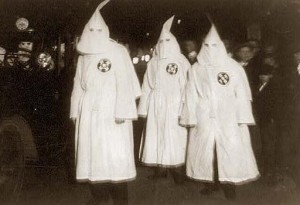 Jerusalem ‘Lynching’ Raises Specter Of Anti-Palestinian Terrorism
Jerusalem ‘Lynching’ Raises Specter Of Anti-Palestinian Terrorism
By Zack Beauchamp, Aug 17, 2012 at 12:00 pm
Two separate attacks on Palestinians civilians Friday morning raise serious questions about rising anti-Palestinian radicalism among Israeli youth. In the first incident, a mob of Israeli Jewish youth surrounded three Palestinians walking in Jerusalem’s Zion Square and assaulted them, yelling racist slogans including “Death to the Arabs.” According to the Israeli newspaper Ha’aretz, one of the victims remains in the intensive care unit in a nearby hospital. The second incident, a firebomb hurled at a West Bank taxi full of Palestinians, injured six of the passengers. Israeli authorities suspect extremist settlers were responsible for the attack.
These incidents fit into a disturbing pattern of growing violence committed by radical Israelis, particularly in the West Bank. Last December, Defense Minister Ehud Barak warned about “homegrown terror” attacks committed by extremist settlers against Israeli soldiers and Palestinian civilians. There had been an uptick in “price tag” attacks, referred to as such because the terrorists were intending to exact a price for any moves by the Israeli government towards dismantling illegal settlements or withdrawing from the West Bank.
A new report written by two experts on Israeli counterterrorism at the Brookings Institute, Daniel Byman and Natan Sachs, suggests that the problem may be more serious than some had previously thought. Byman and Sachs, citing UN numbers, find that the number of “price tag” attacks had roughly doubled from 2009 to 2011 with limited response from Israeli authorities: over 90 percent of investigations into incidents of settler violence over the past ten years ended without indictments. The attacks have escalated recently, Byman and Sachs argue, as a consequence of the rise of an extremist subculture among young, religious settlers:
[O]ver the last several years, the evolution of the settler community has also led to the growth of a small but significant fringe of young extremists, known as the “hilltop youth,” who show little, if any, deference to the Israeli government or even to the settler leadership. No matter how strongly Gush Emunim opposed government policy, it always officially avoided vigilante violence. But these young radicals, who largely live in settlements deep in the West Bank and do not affiliate with traditional religious authorities, have embraced it. These settlers — likely no more than a couple thousand, a small but dangerous minority within the broader community — are the ones leading the “price tag” attacks against Palestinian civilians and Israeli soldiers. They have lost faith in the notion that the state, under its current leadership, is key to settling the Land of Israel. Instead, they see it as an obstacle to God’s will.
Indeed, Barak’s December comments were prompted by a hilltop youth raid on an IDF base, which ended in the arrests of five radical settlers and a major public debate in Israel about settler. However, as today’s attacks suggest, the problem has yet to be solved: an EU statement from this May cited settler violence as one of several key factors holding back progress on a two-state solution.
Byman and Sachs recommend several ways Israeli authorities can more effectively address the problem, including coordinating with more moderate settlers as part of a targeted counterterrorism campaign. Both they and Andrew Exum, an expert on irregular warfare at the Center for a New American Security, suggest that stepped-up condemnation from Jewish religious authorities and the United States could limit the hilltop youth’s ability to commit further violence.
Byman’s recommendations in particular draw on his recent study of Israel’s counterterrorism policies, which have quite a long history: Israel has been forced to confront radical Arab nationalist and/or Islamist groups almost since its creation. These groups have not been eliminated: Israel today is still threatened by terrorist organizations, particularly in and around the Hamas-run Gaza Strip.
http://thinkprogress.org/security/2012/08/17/691111/jerusalem-lynching-raises-specter-of-anti-palestinian-terrorism/ or http://bit.ly/NMc96P
Photograph of Ku Klux Klan parade near District of Columbia, 1922. http://www.old-picture.com/united-states-history-1900s—1930s/bordering-Virginia-counties-District.htm
